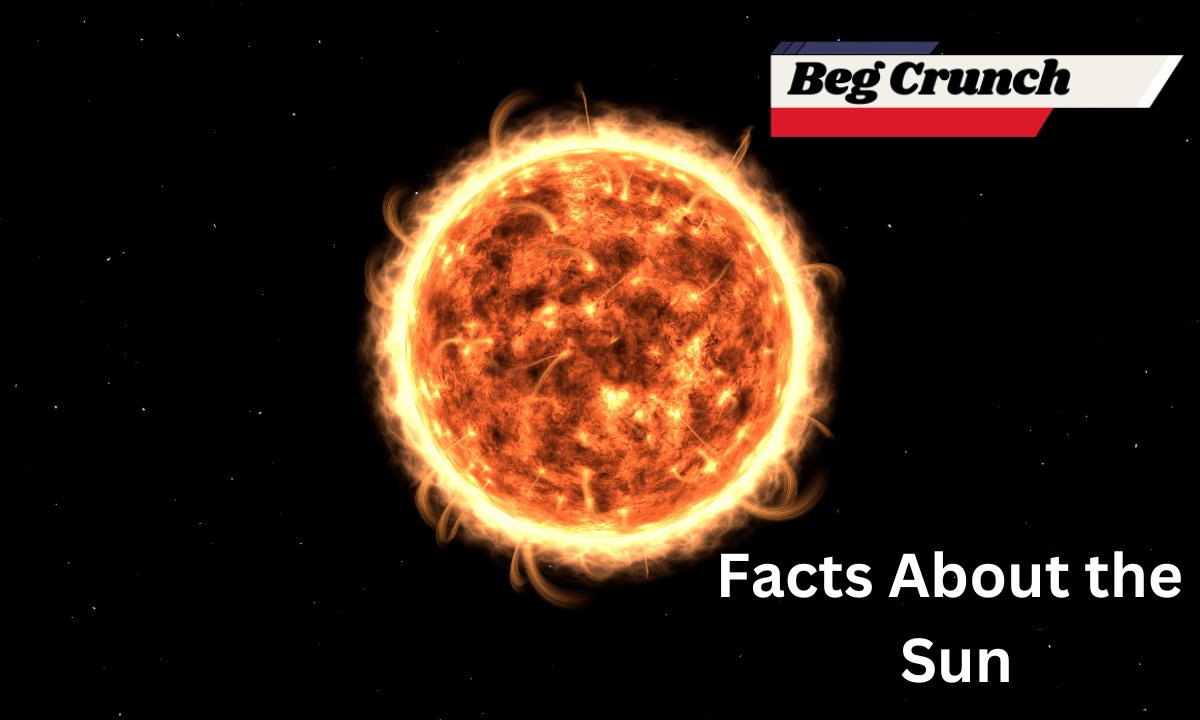Facts About the Sun
The Sun, a blazing ball of hot plasma at the center of our solar system, is the source of life and energy for all the planets, including Earth. With its immense heat and gravitational pull, the Sun plays a crucial role in maintaining the stability and vitality of our solar system. In this article, we’ll explore a variety of fascinating facts about the Sun, delving into its composition, behavior, significance, and more.
Introduction
The Sun, often referred to as a G-type main-sequence star, is approximately 4.6 billion years old. It formed from a giant molecular cloud of gas and dust and has been radiating light and heat ever since. Our understanding of the Sun has grown immensely over the years, thanks to advancements in technology and space exploration.
Basic Properties of the Sun
- Size: The Sun’s diameter is about 109 times that of Earth, making it an astonishingly vast celestial body.
- Mass: It holds approximately 333,000 times the mass of Earth, accounting for about 99.86% of the entire solar system’s mass.
- Temperature: The core of the Sun reaches temperatures of around 15 million degrees Celsius (27 million degrees Fahrenheit).
- Light Output: The Sun emits energy equivalent to 3.8 x 10^26 watts, ensuring a constant supply of light and warmth to its surrounding planets.
The Cosmic Forge: Nuclear Fusion’s Radiant Furnace
The Sun’s resplendent energy, its very life force, emanates from a process of incomprehensible scale and power: nuclear fusion. This cosmic alchemy transpires within the heart of the Sun, within the furnace of its core. The elemental dance at play involves hydrogen atoms, the most abundant building blocks in the universe, colliding and fusing into helium. This alchemical embrace unleashes an astounding torrent of energy that cascades outward, illuminating the cosmos.
These atomic collisions are not ordinary; they are a testament to the very forces that govern the universe. Under the intense pressure and heat that pervade the Sun’s core, hydrogen atoms are thrust into a maelstrom of activity. Overcoming their natural repulsion, the atoms meld, forging helium, and in the process, releasing light, heat, and a symphony of subatomic particles.
The Cosmic Balance: Equilibrium Born from Fusion
The Sun’s brilliance is not a fleeting spectacle but a testament to a continuous cosmic dance—a fusion-powered equilibrium that defies the cosmic forces that seek to consume it. This equilibrium, a balance between the Sun’s gravitational pull toward collapse and the immense energy released through fusion, is the cosmic heartbeat that orchestrates the Sun’s existence.
In this cosmic ballet, the gravitational force seeks to crush the Sun’s core, compressing it under an unimaginable weight. Yet, the Sun’s core resists, as each atomic collision engenders a force that pushes outward, counteracting the gravitational crush. This exquisite balance births the Sun’s stability, and in its embrace, the Sun shines unceasingly.
The Sun’s Layers and Structure
The Sun can be divided into several layers, each with distinct properties and functions:
- Core: This is the central region where nuclear fusion occurs, producing enormous amounts of energy.
- Radiative Zone: Energy generated in the core travels through this zone via radiation as photons bounce off atoms.
- Convective Zone: Beyond the radiative zone, energy is transported through convection, where hot plasma rises and cooler plasma sinks.
- Photosphere: The visible surface of the Sun emits light and is characterized by sunspots, which are cooler areas caused by magnetic activity.
- Chromosphere: This layer emits a reddish glow and is visible during solar eclipses.
- Corona: The outermost layer of the Sun’s atmosphere, the corona is incredibly hot and emits solar wind.
Solar Activities: Sunspots and Solar Flares
Sunspots are transient occurrences on the photosphere of the Sun brought on by ferocious magnetic activity. Because they are colder than the surroundings, they look darker. Solar flares, on the other hand, are sudden bursts of energy and light resulting from the release of magnetic energy. These phenomena can impact Earth’s communication systems and power grids.
The Sun’s Influence on Earth
The Sun’s influence on Earth is profound and far-reaching:
- Light and Heat: The Sun’s energy sustains life on Earth, providing warmth and light for photosynthesis, which is crucial for plant growth.
- Climate and Weather: Solar radiation plays a pivotal role in Earth’s climate and weather patterns, driving wind currents and ocean circulation.
- Auroras: Solar wind particles interacting with Earth’s magnetic field create the mesmerizing auroras, also known as the Northern and Southern Lights.
- Tides: The Sun’s gravitational pull, along with the Moon’s, causes the ocean tides on Earth.
Solar Mythology and Cultural Significance
Throughout history, the Sun has held great cultural and mythological significance in various civilizations. Many societies revered the Sun as a deity, attributing its power to creation, fertility, and life itself. This reverence is evident in ancient religious practices and architectural designs.
FAQs
Q1: Can we look at the Sun directly?
No, looking directly at the Sun can cause severe damage to your eyes. Always use proper eye protection, such as specially designed solar viewing glasses, when observing the Sun.
Q2: How does the Sun’s energy reach Earth?
The Sun’s energy reaches Earth in the form of electromagnetic radiation, including visible light, ultraviolet light, and infrared radiation.
Q3: Is the Sun getting brighter or dimmer over time?
The Sun’s brightness is gradually increasing as it fuses hydrogen into helium in its core. Over billions of years, this will lead to a gradual increase in luminosity.
Q4: Can the Sun ever go supernova?
No, the Sun does not have enough mass to undergo a supernova explosion. Instead, it will eventually expand into a red giant and then shed its outer layers to become a white dwarf.
Q5: How does the Sun’s magnetic activity affect Earth?
Solar magnetic activity, such as sunspots and solar flares, can impact Earth’s magnetic field, causing disruptions in communication systems and power grids. They can also lead to stunning auroras at high latitudes.
Conclusion
The Sun’s remarkable properties, crucial role in our solar system, and cultural significance make it a captivating subject of study and admiration. From its fiery core to its ever-changing surface, the Sun’s dynamics continue to intrigue scientists and inspire us to explore the marvels of the universe.







